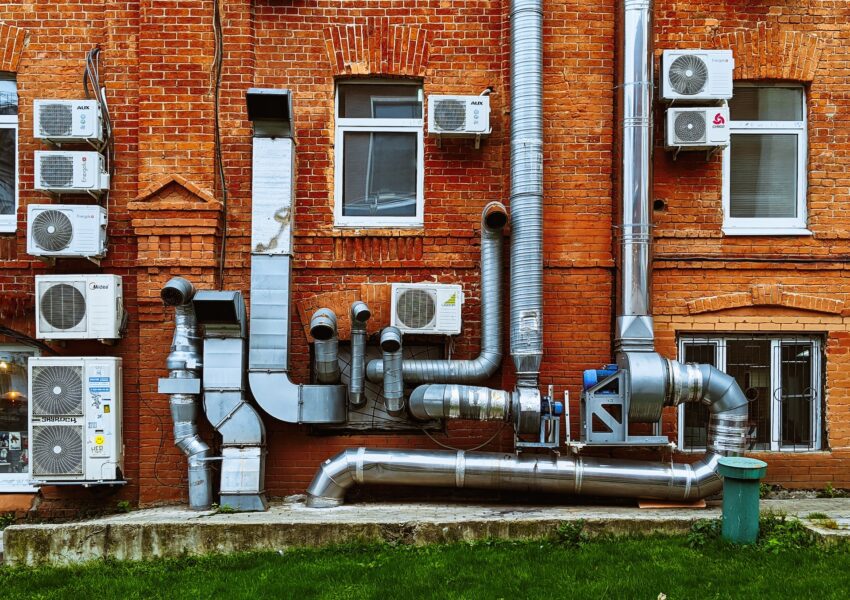Heating, ventilation, and air conditioning systems (HVAC) keep indoor temperatures comfortable and manage moisture levels. They also supply external fresh air to control oxygen and carbon dioxide levels.
When it comes to heating, furnaces burn fuel to produce heat, then distribute it throughout your home through a metal or synthetic tubing system called ductwork vents or registers, directly cooling or heating air in different rooms.
Heating
There are various HVAC system types, but they all function similarly. Each uses the same basic principles to warm and improve indoor air and move it around the enclosed space.
With forced air systems, the air is heated in a furnace, sent via ductwork, and circulated into each room via blower fans. Fuel sources can include natural gas, propane, oil, or electricity.
The physics of heating and cooling systems is based on the same principle as boiling water: a liquid’s temperature depends on its pressure. As atmospheric pressure decreases, a liquid’s boiling point rises.
An economizer, a common feature in HVAC systems, allows the unit to draw from outside air when the climate is suitable to reduce required mechanical cooling. This type of system calculates the optimal point at which it is cheaper to use a furnace or a heat pump and switches between the two as needed.
Ventilation
A significant part of HVAC is ventilation, the air exchange that keeps the environment comfortable and healthy. It involves the removal of moisture, odors, heat, airborne bacteria, and other contaminants. It also includes temperature regulation and fresh air replenishment.
Your home’s air conditioning system comprises an indoor air handler, ductwork, thermostat, and other units like a humidifier or air purifier. Its purpose is to make your living environment comfortable all year round, and that’s not an easy feat!
Forced-air systems have an air handler with a blower motor that draws air overheating and cooling components and then distributes it throughout the house via ductwork. This kind of system, which combines an air conditioner and a furnace (or heat pump), is found in most homes today. Other HVAC systems include packaged or split systems with outdoor and indoor units. These are generally used in smaller buildings to save space and are less expensive than central systems.
Air Conditioning
HVAC systems include components that provide heating, cooling, ventilation, and air quality control. They can be found in various buildings, including single-family homes, apartments and condominiums, school campuses, hospitals, office complexes, and skyscrapers.
Heating systems like furnaces and boilers use combustion to produce heat, which is transferred to indoor spaces through ductwork. Cooling systems like air conditioners remove heat energy from indoor air and move it outdoors, reducing temperatures and providing comfort.
Ventilation systems like evaporative coolers, energy recovery ventilators (ERVs), and exhaust fans move and circulate air throughout a building, cleaning it of contaminants and improving air quality. HVAC systems that utilize a balanced ventilation system introduce and exhaust an equal amount of outside air, pulling it through supply vents and exhaling it out through exhaust vents in strategic places to improve indoor air quality.
Thermostat controls, digital or analog devices used to regulate your home’s temperature, communicate with the other units in an HVAC system to change the indoor temperature. Ductwork carries and distributes the warmed or cooled air, filtered as it moves through the system.
Maintenance
A home’s HVAC system is complex, requiring the skills, knowledge, and tools only trained technicians have. An HVAC career can be ideal for those who enjoy working with their hands and love solving problems.
An HVAC system consists of return and supply vents (registers), ductwork, filters, a blower motor, and devices that heat and cool air. When the circulating fan blows air over these devices, the heat or cooled air is distributed throughout the home.
One of the most critical maintenance tasks that you can do is to clean your condensate drain line, which should be done regularly to prevent it from becoming clogged. Cleaning the line can be as simple as detaching the drain and pouring a cup of vinegar or bleach into it.
It’s essential to have regular maintenance performed by an HVAC professional because it will reduce the chances of a costly emergency repair. A regular schedule also saves money on energy bills by keeping your system running efficiently.


